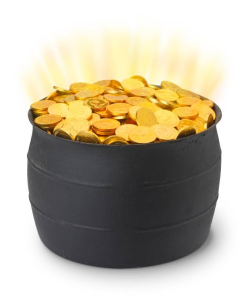I’m a big fan of Eric Ries and the lean startup movement that he’s championing at Startup Lessons Learned. I think many of the fundamentals behind the lean startup are things you likely have been practicing for a while. But, seeing it articulated so well and establishing a common vocabularly for us to talk about it is immensely valuable.
One of the key parts of the lean startup is the concept of a “minimally viable product”. The MVP is a product that has the minimum set of features needed to learn what the market wants. The idea behind the MVP is to spend as little energy is possible figuring out whether what you’re building is something people want.
In this article, I’d like to look at what happens after you’ve built the minimally viable product for your market. What’s next? I’m going to suggest that once you know there’s a market, you should work towards the “Maximally Buyable Product” (MBP). Yes, I know that’s not the perfect term, but I’m a sucker for literary symmetry and you have to admit, it’s got a nice ring to it.
Given that this is the first time the term Maximally Buyable Product has been used (I made it up), I’ll take a shot as defining it:
Maximally Buyable Product: The MBP has the set of features needed to capture the maximum potential opportunity in a market. These are the features that make it easy for people to try, buy
Features Of A Maximally Buyable Product
1. Easy To Understand: To be “maximally buyable”, the product should be simple to understand. It’s hard to market and sell things that people don’t understand.
2. Easy To Try: You may think that your product is revolutionary and is creating it’s own category and that you have no direct competition. But, as it turns out, your potential customers didn’t get that memo. Doesn’t matter what market you’re in, people believe they live in an age of abundant choices. Given this perception, to be “maximally buyable”, you need to ensure that the product is designed such that it is easy to try. This takes investment.
3. Easy To Buy: This one’s going to sound obvious, but so many of us trip over this one (including me) that it bears mentioning: To get the maximum amount of sales for your product, you need to have the minimum degree of pain in the buying process. This includes having clear, simple pricing — on your website. It includes a straightforward purchasing process (based on your market). It includes payment mechanisms that map to customer expectations.
4. Easy To Stay: Chances are, your startup makes money from customers over a period of time. This is either because you’re charging on some subscription basis (monthly, quarterly, annually) or because even if you have some large up-front fee, there’s some trailing revenue in terms of maintenance/support/upgrades/cross-sells etc. Given that the revenue you see from a customer is spread out over time, the maximally buyable product ensures that customers are kept happy for as long as possible. If you design for customer longevity (not just customer acquisition), you'll find that often a different set of dynamics are at play.
5. Easy To Leave: Though you want customers to stay with you as long as possible, designing your product to make it easy to leave is an important part of its "buyability". A "feature" that supports this easy to leave notion is a robust "export" feature (to avoid data lock-in). The easier you make it for customers to leave, the more likely that are to buy in the first place.
You may be thinking that each of the above aren’t really about product features, but about marketing (and sales). I’d disagree. I’d argue that even though these aspects of the product are not the features that customers are directly paying for (they’re not the ones that solve the customers immediate problem), they should still be thought of as “features”. You should carefully select these “maximally buyable product” features just like you would select features for your MVP. You should should design them like you would any other feature. It’s a mistake to think of them as being part of finance/accounting/operations/sales/marketing/whatever. They’re part of the product.
If it’s a part of your customer’s experience with you, it’s a feature of your product.
Some examples: The “signup for a trial” process. The “upgrade” process. The “how do I get a receipt or change my billing info” process. All of these are features of the product. You can lose money just as easily by poorly selecting or designing these features as you can by the “core” features.
What do you think? Have you invested sufficient time in building a Maximally Buyable Product? Would love to hear your ideas and experiences in the comments.